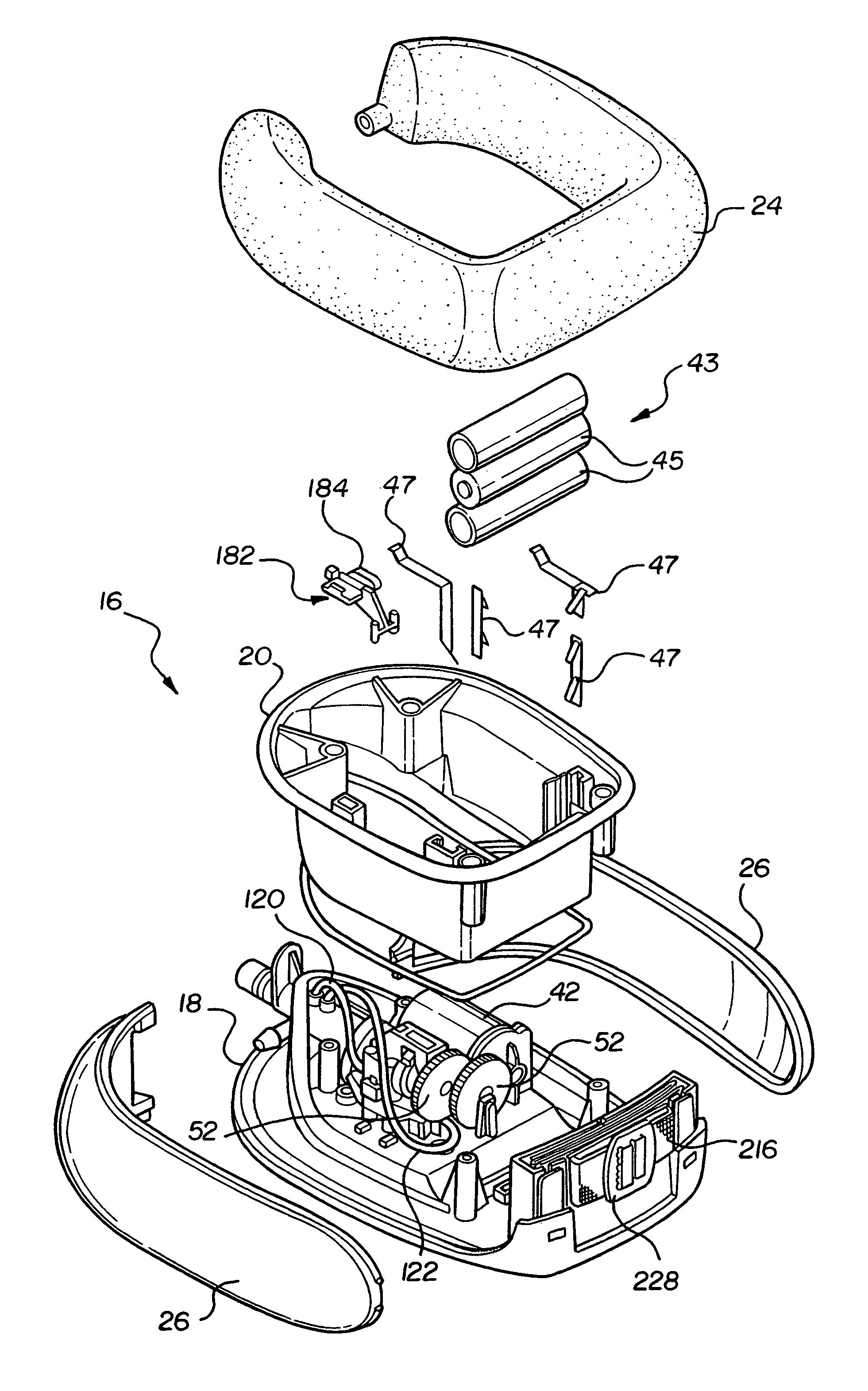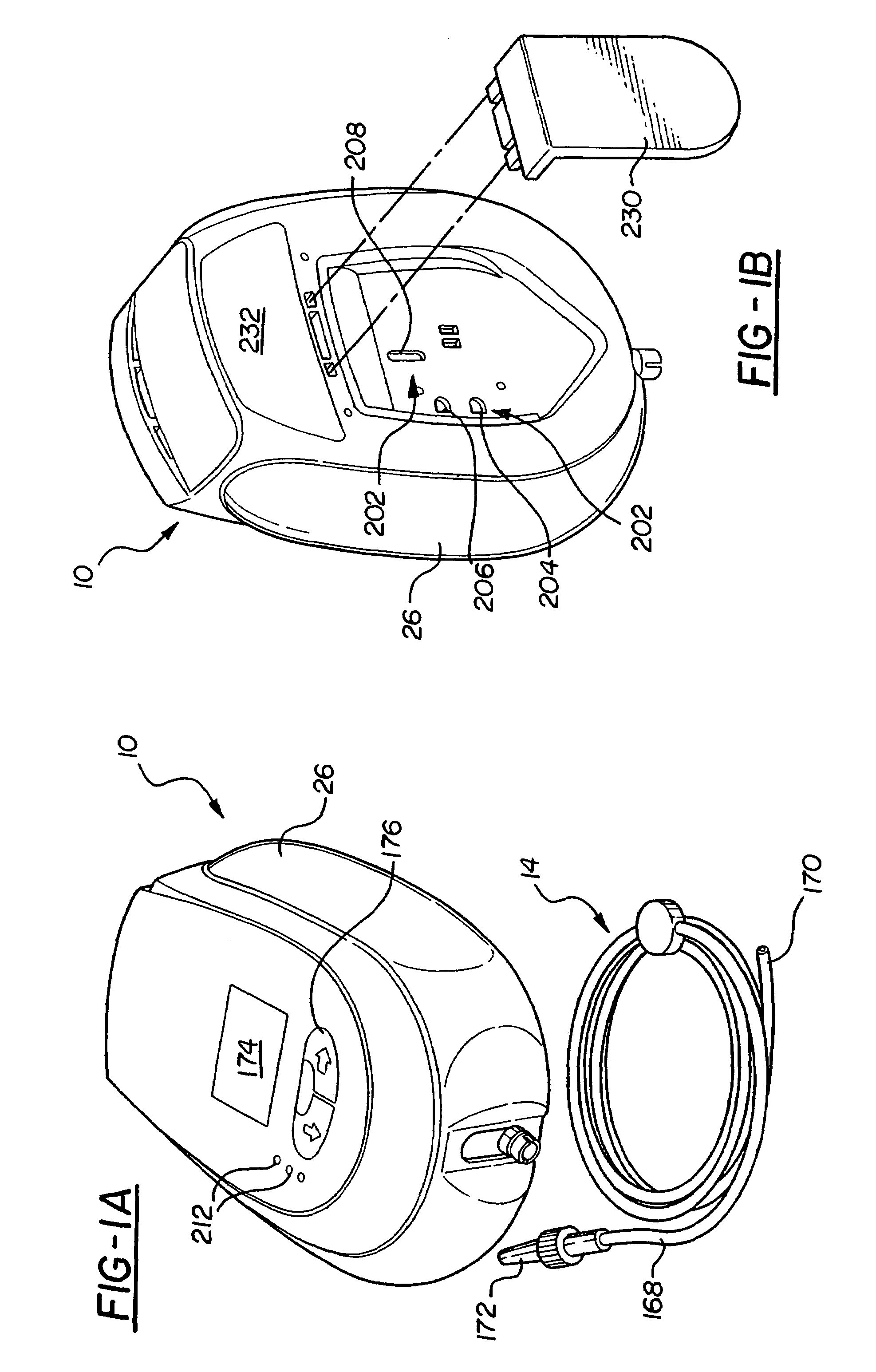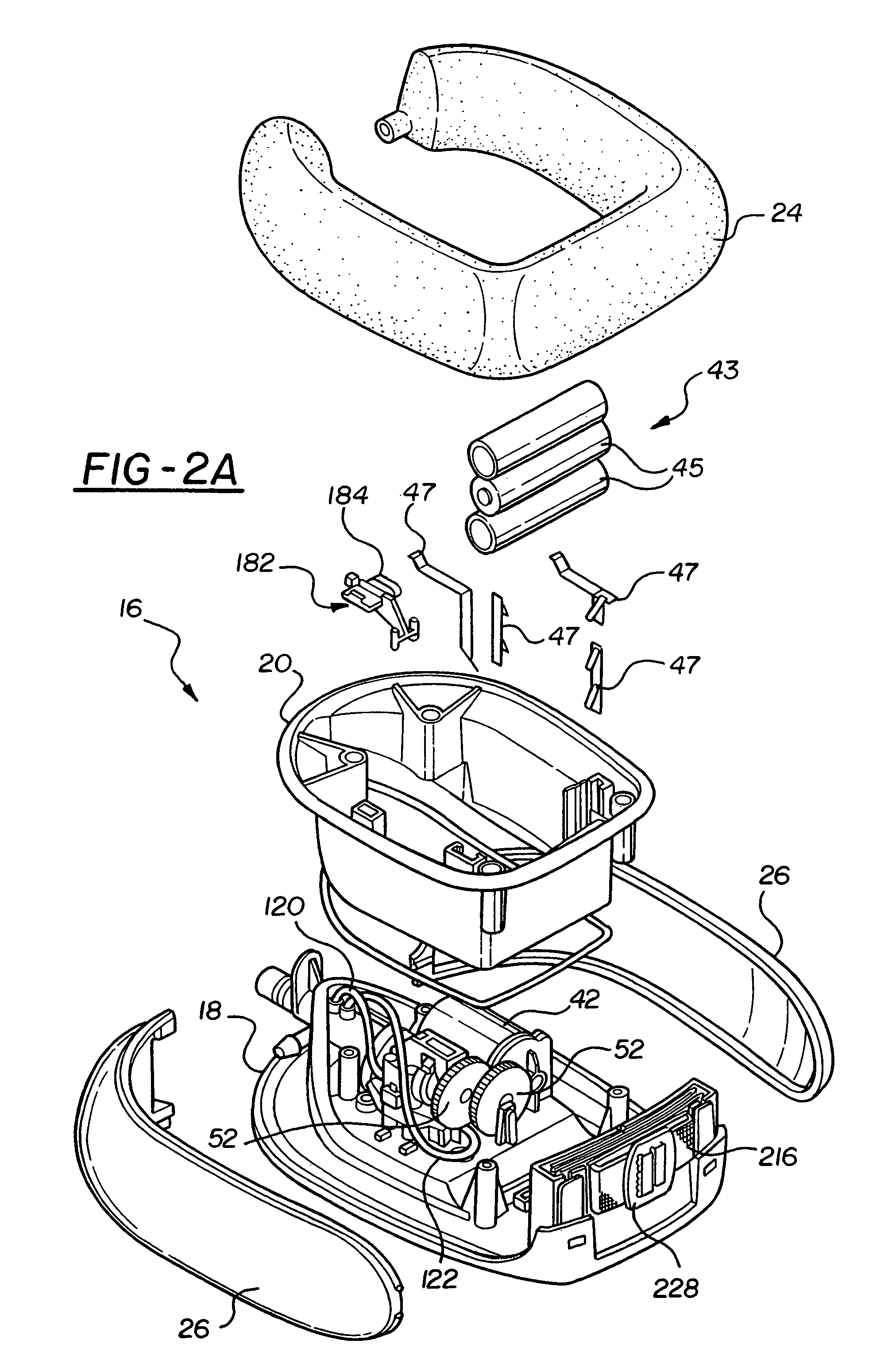Pump assembly for an integrated medication delivery system
a medication delivery system and pump assembly technology, applied in the direction of suction devices, tube connectors, other medical devices, etc., can solve the problems of cassettes not housing the supply of medication, deficiency of conventional medication delivery systems, and inconvenient patient experience, so as to achieve convenient control and programming, convenient patient experience, and effective medication amount control
- Summary
- Abstract
- Description
- Claims
- Application Information
AI Technical Summary
Benefits of technology
Problems solved by technology
Method used
Image
Examples
Embodiment Construction
[0064]Referring to the Figures, wherein like numerals indicate like or corresponding parts throughout the several views, an integrated medication delivery system 10 is generally disclosed at 10. The integrated medication delivery system 10, hereinafter described as the system 10, delivers medication to a patient 12 (refer to FIG. 19). More specifically, the system 10 is primarily used throughout the medical profession to deliver pain control medication and other medications to the patient 12 after a surgical, or some other medical, procedure. As disclosed in FIG. 1A, the system 10 is used in combination with an infusion tube set 14 to deliver the medication to the patient 12. The infusion tube set 14 is described below.
[0065]The system 10 of the subject invention is also suitable for complete sterilization by a sterilization fluid including, but not limited to, ethylene oxide (EtO) gas. Although not ideal, certain liquids may even be used to sterilize the system 10. For descriptive ...
PUM
 Login to View More
Login to View More Abstract
Description
Claims
Application Information
 Login to View More
Login to View More - R&D
- Intellectual Property
- Life Sciences
- Materials
- Tech Scout
- Unparalleled Data Quality
- Higher Quality Content
- 60% Fewer Hallucinations
Browse by: Latest US Patents, China's latest patents, Technical Efficacy Thesaurus, Application Domain, Technology Topic, Popular Technical Reports.
© 2025 PatSnap. All rights reserved.Legal|Privacy policy|Modern Slavery Act Transparency Statement|Sitemap|About US| Contact US: help@patsnap.com



